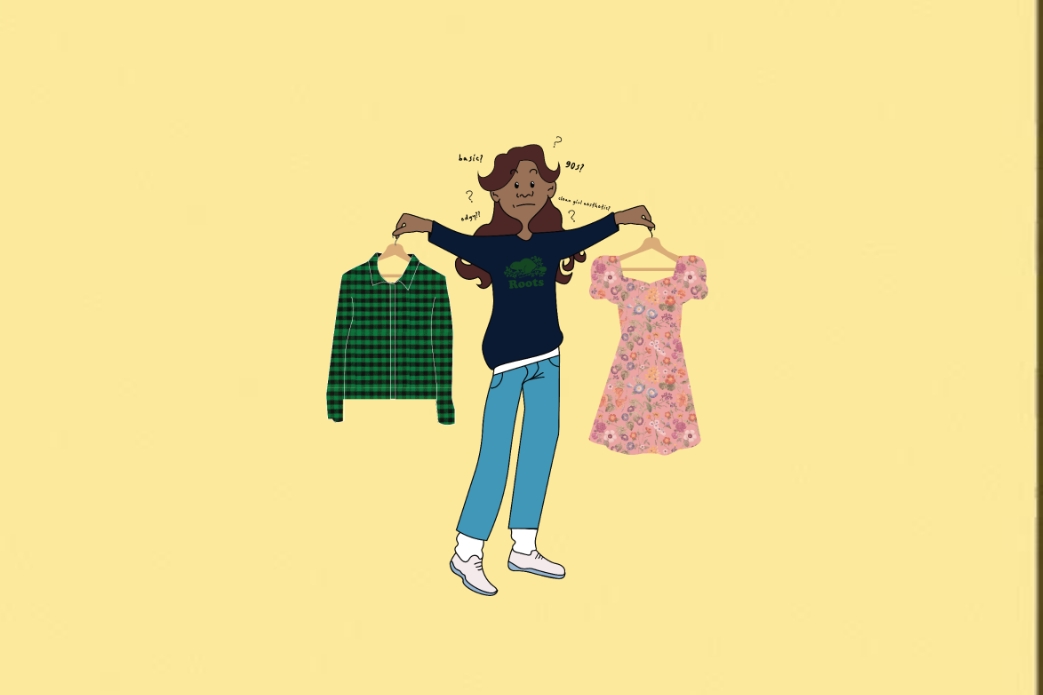An ode to the student with no style
It is expensive to have an aesthetic as an undergraduate student.
Last summer, I deleted my Pinterest. Why? Because I was jealous. I know that might seem bitter, and I definitely should seek professional help, but please, let me explain. From June to August, I worked 9-to-5 at a summer camp in Montreal. During my shifts, I only wore black joggers or leggings with old t-shirts, given that most activities were spent running after energized seven-year-olds. Every day, I’d come home sweaty and exhausted. After a long shower, I’d lay in bed only to “doomscroll” on Pinterest. I would drown in a sea of aesthetics—whether it was cottage core, 90s nostalgia, off-duty Bella Hadid, or clean girl aesthetic—my feed was bombarded with images of beautiful, rich, and stylish people. It not only reminded me of my own lack of style, but it also reminded me of my empty bank account.
The truth is, we live in a time where fashion is omnipresent. From YouTube clothing hauls to Instagram style influencers, fashion is an intrinsic part of the Gen Z cultural landscape. And although it is beautiful to watch my generation experiment with clothes, I can’t help but feel left out. After all, having a singular style or embodying a certain aesthetic is a luxury most undergraduate students do not have.
Plus, I feel like our generation is contradicting itself. At the beginning, the freedom for each person to have their own style was appealing. It showed the world that Gen Z was a progressive, anarchist generation, that did not want to abide by traditional, western politics of beauty and style. In a way, I feel like Gen Z’s openness to change was primarily expressed through fashion. We care about the environment, so we thrift. We are LGBTQ2S+ friendly, so we wear gender-fluid clothes. All of these shifts in fashion symbolized Gen Z’s convictions.
But something changed recently. I noticed a materialistic streak in this new wave of “dressing as you please”—a sinister undertone that had a lot to do with social media. The rising popularity of TikToks where people ask strangers how much their outfit costs prove my point. They often showcase young New Yorkers who all embody unique, progressive, and disruptive looks. When I first came across this type of content, my naïve-ass thought these people were broke students like me. And then, I heard a guy says his belt cost $540 and his bag was another $800. And that’s fine—you don’t have to hide your financial stability to avoid being judged by people like me, but GEEZ…a $540 belt???
Yet, whenever I walk around the University of Toronto Mississauga campus, I am immediately pulled out of this social media bubble. I see students dressed in skinny jeans and checkered vans (which, for whatever reason, were both shunned from the Gen Z fashion scene). I see students in regular outfits with no discernible brand name attached. I see students look like…students. And to be honest, it feels good. It makes me realize that the Gen Z fashion scene is, first and foremost, a social media construct. It only represents a tiny part of our generation; the one per cent who can afford to dress intentionally and catch up with the cultural trends that permeate our feeds.
So, to my fellow students with no style, know that it’s okay to miss out on the glitz and glam of having a definitive aesthetic—you are focusing on something much more important than any circulating fashion trends. Just because you wear black hoodies everyday does not mean you are not a unique and innovative being. In a world designed to make you feel unremarkable, the only thing that never goes out of style is being your authentic self, even if your clothes don’t convey it (yet).

